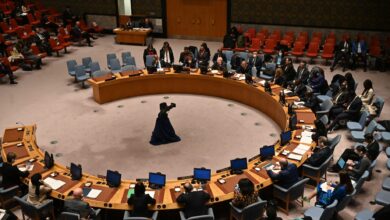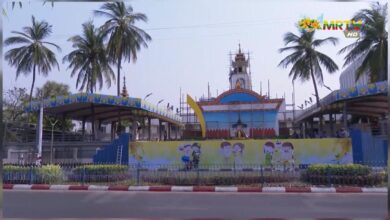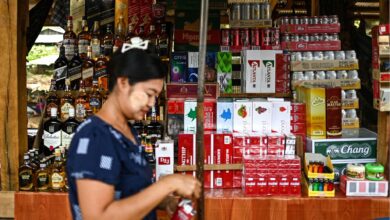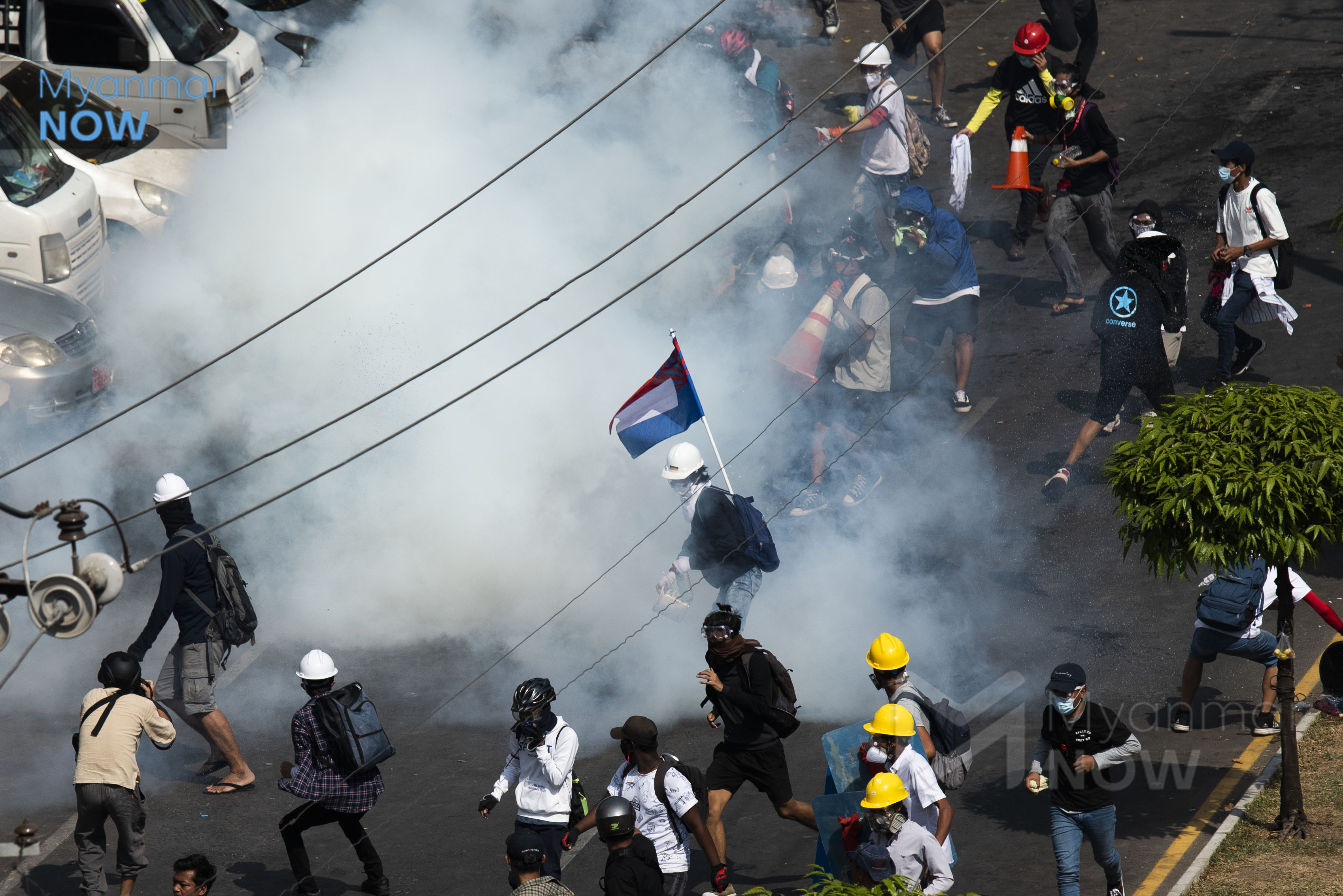
Ko Saung, a native of Mandalay, was completing a distance-education program at the city’s Yadanabon University and working at his parents’ business when the coup changed everything.
Like many others around the country, he joined protests soon after the military seized power on February 1. Together with other members of his student union, he found himself on the frontlines of the struggle against the newly installed regime.
At first, the junta’s forces used tear gas against the massive crowds that had formed in a show of resistance to a return to military rule. Then they started shooting.
It has now been nearly two months since Myanmar’s top general, Min Aung Hlaing, overthrew the country’s elected government, and the killing continues unabated. Each week brings another escalation of the violence and a fresh wave of atrocities against unarmed civilians, many of them children.
Armed only with slingshots, makeshift shields, and Molotov cocktails, Ko Saung and his comrades could see that they were no match for armed forces equipped with lethal weapons and a license to murder without mercy.
That’s why they decided it was time for them to get real weapons of their own, and to learn how to use them. And to do that, they knew they would have to go to border areas, where ethnic armed groups have fought the Tatmadaw for decades.
“We can’t just protest and throw Molotov cocktails,” said 24-year-old Ko Saung, explaining why he and hundreds of others like him have left the cities in the hope of finding a more effective way of way of fighting their oppressors.

Fighting the pain
For many young people, the regime’s total disregard for human life is what fuels their desire to defeat it by any means possible. Those who have witnessed scenes of carnage, or who have suffered injuries themselves, emerge from the experience more determined than ever to win at all costs.
Min Min, a 24-year-old youth from Yangon’s North Okkalapa township, was shot twice during an army assault on Hlaing Tharyar, a township on the western outskirts of the city, on March 15.
He was approaching the Bayint Naung bridge on his way to work when two rubber bullets struck him below the wrist. He was taken to the hospital, where he saw many others who had wounds far more serious than his own. Some had been shot in the eye, while others had their intestines spilling out of their abdomens. The hospital was full of the groans of injured civilians and the cries of their loved ones, he said.
This happened on the second day of a five-day army offensive that turned Hlaing Tharyar into a war zone, leaving at least 53 people dead and many others wounded or unaccounted for.
Min Min said he would never forget the immense suffering—his own and others’—that he experienced that day, even though he was barely conscious at the time.
Still recovering from his injuries, he said that if he could, he would happily join any army that would give him a chance to repay those who had treated innocent civilians so cruelly.
“If a people’s army is formed someday, I would join it because I would love to shoot these guys. I want to retaliate. I will never let go of this feeling,” he said as he lay on his back, exhausted with pain.

Heading for the hills
Reaching an ethnic army from Yangon or Mandalay or anywhere else in central Myanmar is no simple matter. It involves going through checkpoints set up to prevent anti-coup elements escaping from areas under the regime’s control. Anyone traveling towards the mountainous border regions can expect to be interrogated and have their vehicle thoroughly searched.
Arrests have even been made on main highways between major cities. On March 22, a military-owned newspaper claimed that 14 youths, including members of the National League for Democracy (NLD), had been captured on the Yangon-Naypyitaw highway as they were making their way north to receive military training from an insurgent army.
None of this has deterred many would-be freedom fighters from leaving their hometowns and their families in search of an army to join. With most cities turned into war zones, anyway, it seems like a risk worth taking.
“For sure if you go out into the streets right now and start chanting anti-coup slogans, you will be shot,” said one youth from Yangon’s South Dagon township who has decided to throw in his lot with an ethnic armed group.
Many urban youths have gravitated towards one group in particular—the Karen National Union (KNU), which is based near the border with Thailand.
But the KNU, which played an important role in creating the All Burma Students’ Democratic Front, the student army formed in the wake of Myanmar’s last coup in 1988, has encouraged the current generation of urban activists to stay where they are and use the resources available to them to fight the regime from within the country.
In an interview with the Karen Information Center on March 20, Padoh Saw Thamein Tun, a permanent member of the KNU’s central executive committee, suggested that since it has become more difficult to reach border areas, young city-dwellers should initiate resistance battles on their own turf.
“Those in urban areas should stay in urban areas,” he said. “They have to learn how to fight urban battles. This is an era of technology. They should be able to do it.”
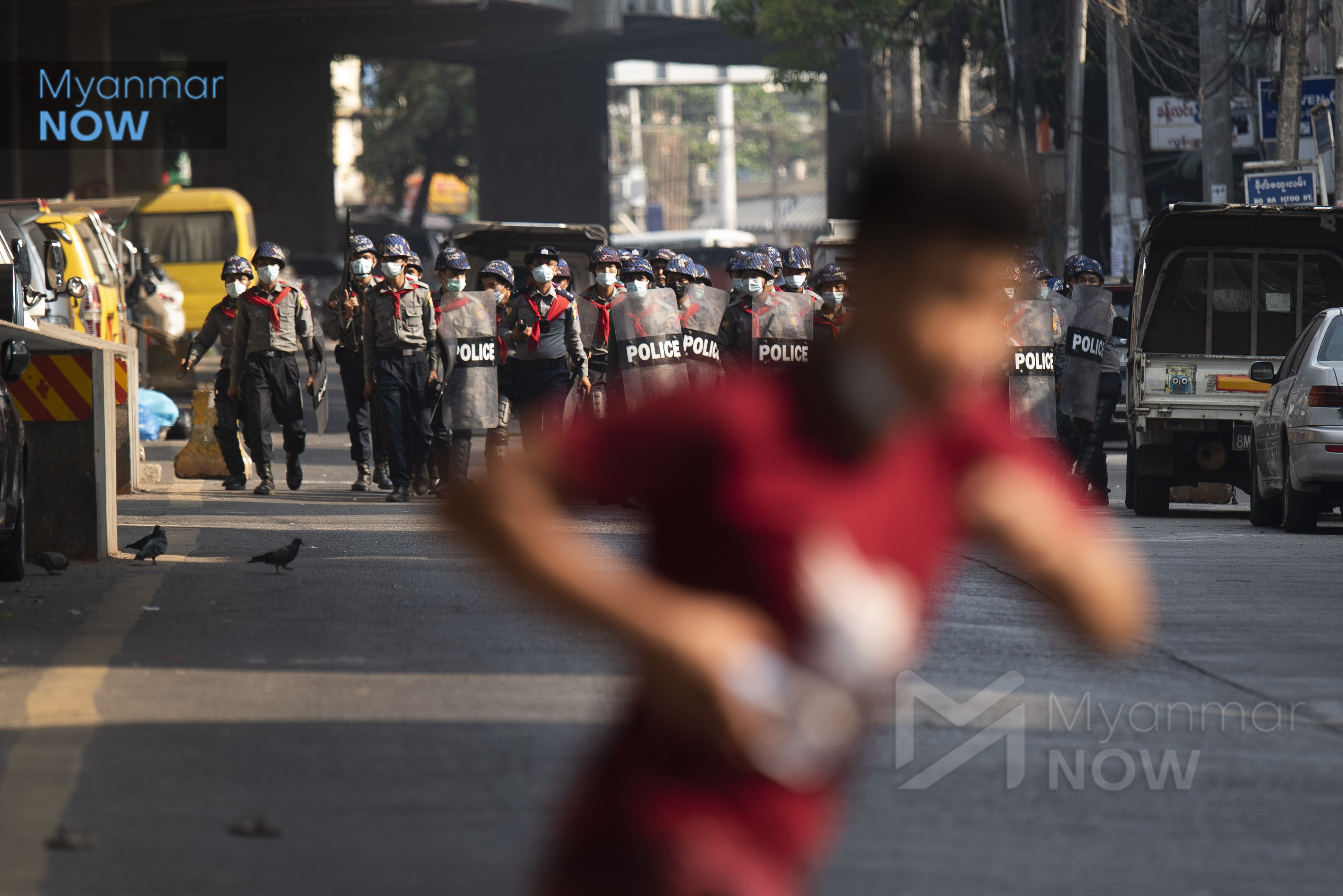
Toward a federal army
The Committee Representing the Pyidaungsu Hluttaw (CRPH), formed by MPs from Myanmar’s ousted civilian government, has offered an alternative: a federal army that includes all forces opposed to the regime.
According to the CRPH, the idea is to set up defence plans from the ward/village level to the township level. After it released a statement outlining the proposal, a number of security committees were established in various parts of the country.
Aung Aung, a 25-year-old NLD member who has joined one such committee in Hlaing Tharyar, said many people are eager to get involved.
“If a federal army is established, I think there are many young people who are ready to serve. They are very eager,” he said.
At present, however, the CRPH is still negotiating with various ethnic armed organisations, including the KNU, to work out a detailed plan for the army as part of a federal union.
The committee’s minister for foreign affairs, Zin Mar Aung, recently acknowledged that there are still practical issues that need to be resolved, but added, “We’re about 80% there.”
In an interview with the BBC, KNU spokesperson Padoh Saw Mahn Mahn said the CRPH needs to have a political plan that the ethnic armed groups can place their trust in.
“If the CRPH can lead, they should. If not, we ethnic armed organizations will form a collective army, as that is a responsibility we have historically,” he said.
Ko Saung, who is now receiving military training from an ethnic army, said the CRPH needs to reach out in more strategic ways to young people who want to serve in the federal army.
So far, he said, the CRPH’s statements on the federal army lack any real substance.
“Until now, they are up in the air. We don’t know who will lead the army. We don’t know how to mobilize. So I don’t trust them,” he said bluntly.
(All names in this article have been changed to protect sources and their families.)
